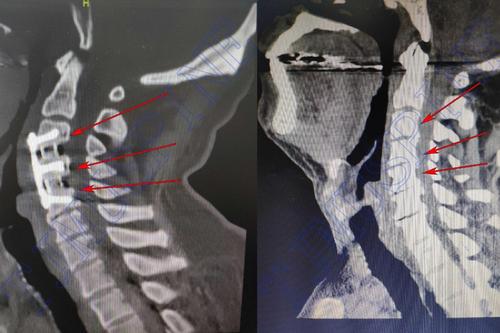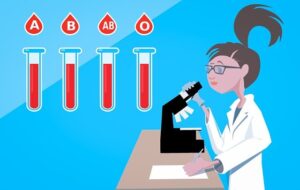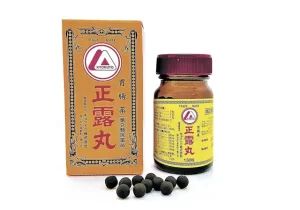Ankylosing spondylitis requires continuous medication
- Gut Bacteria Enzymes Offer Hope for ABO Universal Blood Transfusions
- Well-Known Japanese Medicine Exposed for 30 Years of Data Falsification
- Oregon Reverses Course: From Decriminalization to Recriminalization of Drug Possession
- Why Lecanemab’s Adoption Faces an Uphill Battle in US?
- Yogurt and High LDL Cholesterol: Can You Still Enjoy It?
- WHO Releases Global Influenza Vaccine Market Study in 2024
Ankylosing spondylitis requires continuous medication
Ankylosing spondylitis requires continuous medication. Ankylosing spondylitis causes great damage to the human spine or other joint tissues, and prompt treatment is needed once it is diagnosed.
Ankylosing spondylitis is a chronic disease that mainly affects the spine. It mostly occurs in young men between 20 and 30. The initial symptoms of the onset are lumbosacral pain and morning stiffness. According to the international general diagnostic criteria, patients with low back pain are in three Months or more, and imaging shows that sacroiliac arthritis or HLA-B27 is positive in laboratory examination, and the influence of factors such as bad posture and activity are excluded, it can be diagnosed as ankylosing spondylitis.
Ankylosing spondylitis causes great damage to the human spine or other joint tissues, and prompt treatment is needed once it is diagnosed. If you have suspected symptoms related to ankylosing spondylitis, you need to go to the rheumatology department of a major hospital for detailed examination and disease evaluation to confirm the diagnosis or rule out.
Many patients with ankylosing spondylitis are not detected in time or received standardized treatment at the initial stage, which leads to a prolonged course of ankylosing spondylitis, gradually worsening and involving other joint deformities, causing systemic ankylosing spondylitis, leading to disability.

In the clinical medication of ankylosing spondylitis, commonly used non-steroidal anti-inflammatory drugs such as aspirin, indomethacin, ibuprofen, celecoxib, diclofenac and other drugs are mainly used to improve morning stiffness and joint swelling For symptoms such as pain, many people may be more worried about whether drugs contain hormones. In fact, these drugs do not contain hormones. Steroids usually refer to steroids (hormones as we understand them), not steroidal anti-inflammatory drugs. (NSAIDs) refer to non-hormonal anti-inflammatory drugs.
Moreover, the names of glucocorticoid drugs used in treatment also have a feature. Their common names often end with “what is loose”, such as “prednisone”, such as “dexamethasone”, etc. Patients can rely on these to follow Non-steroidal anti-inflammatory drugs are differentiated.
What are the effects of non-steroidal drugs on ankylosing spondylitis?
Common inflammatory mediators in patients with ankylosing spondylitis include prostaglandins, interleukins and tumor necrosis factor, etc. These inflammatory mediators are the chief culprits of the pain of ankylosing spondylitis.
When drugs are used to inhibit inflammatory mediators, inflammation can be relieved and pain can also be relieved. Non-steroidal anti-inflammatory drugs (NSAIDs) are just such drugs, which act on cyclooxygenase to inhibit the synthesis of prostaglandins from arachidonic acid, thereby inhibiting inflammation and reducing pain.
Patients with ankylosing spondylitis also have a remarkable feature-new bone formation.
In patients with ankylosing spondylitis, the sacroiliac joints may have bone destruction and bone fusion. Spinal involvement may be accompanied by heterotopic ossification including tendon ligaments, intervertebral discs, endplates and bony processes, and ligament osteophytes grow from adjacent vertebrae , And finally connected to form a new bone bridge, resembling a bamboo joint change.

These pathological changes further affect the physical functions of patients with ankylosing spondylitis, severely reduce the quality of life of patients, and ultimately lead to disability. Therefore, it is of great significance to inhibit the formation of new bone.
Non-steroidal anti-inflammatory drugs can inhibit new bone formation to a certain extent and prevent the radiological progress of ankylosing spondylitis. Continuous use of non-steroidal anti-inflammatory drugs can inhibit the inflammatory response of patients with ankylosing spondylitis and delay the radiological progress, and ultimately May delay or even prevent disability.
Therefore, non-steroidal anti-inflammatory drugs are the first-line drugs for the treatment of ankylosing spondylitis. Strong friends must standardize the use of drugs during the treatment of ankylosing spondylitis. Trust the doctor, don’t worry about the side effects of the drug or have no hope for the treatment. And abandoning standard treatment or choosing home remedies, such indulgence of ankylosing spondylitis will only cause more damage to the body.
(sourceinternet, reference only)
Disclaimer of medicaltrend.org



